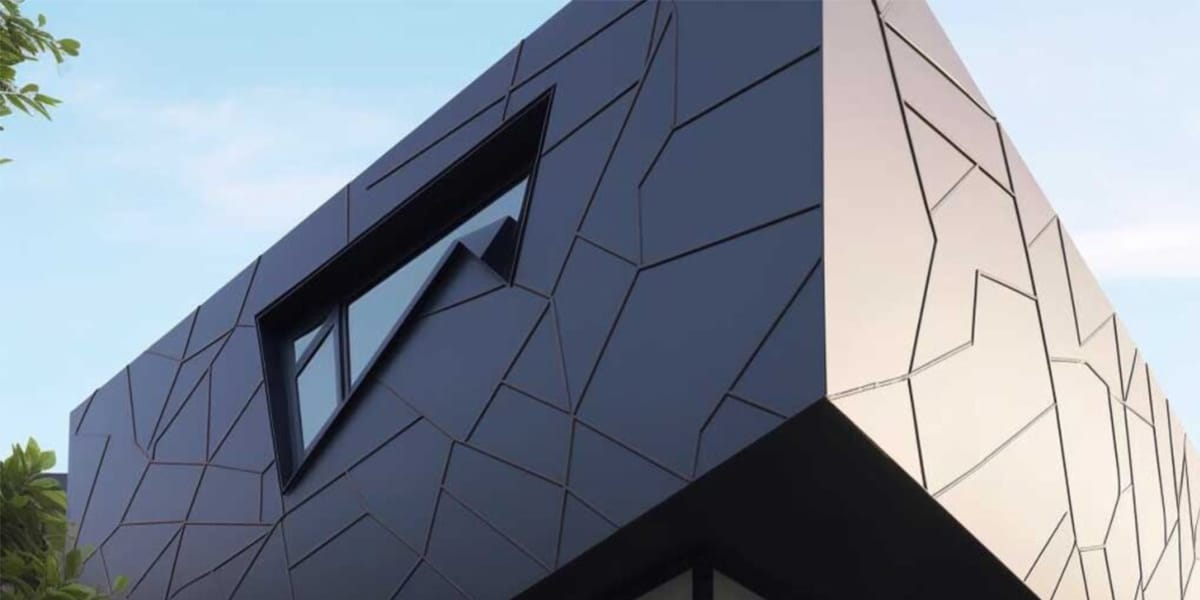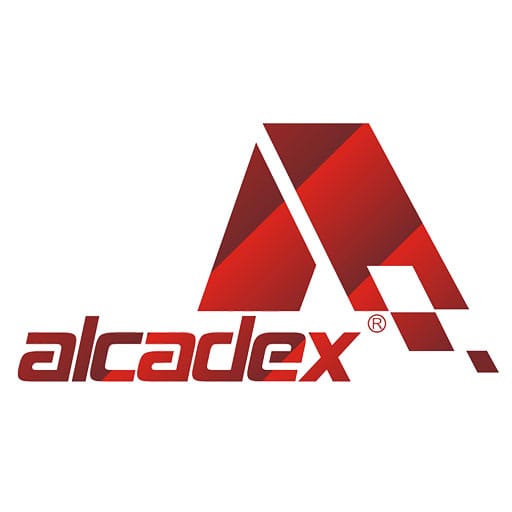
11 Feb What Are Aluminum Composite Panels and Their Composition
Table of Contents
- 1 Composition of Aluminum Composite Panels
- 2 Key Features and Advantages of Aluminum Composite Panels
- 3 Applications of Aluminum Composite Panels
- 4 Maintenance and Care of Aluminum Composite Panels
- 5 Sustainability of Aluminum Composite Panels
Aluminium composite panels (ACPs) combine functionality and aesthetics, making them a popular choice across industries. These panels consist of two aluminium sheets bonded to a non-aluminium core, offering a lightweight yet durable solution. You’ll find them widely used in construction, thanks to their sleek design and ability to withstand harsh weather. The global market for aluminium composite panels is thriving, with Asia Pacific leading at a 40.8% revenue share in 2024. This growth stems from rising construction projects in countries like China and India, driven by affordable housing initiatives and population growth.
Composition of Aluminum Composite Panels
Aluminum Layers
Properties and role in durability
The aluminum layers in aluminum composite panels play a crucial role in their durability. These layers act as the outer surface, providing excellent resistance to weather conditions. Coated with protective finishes, they resist corrosion, UV radiation, and moisture, making them ideal for outdoor applications. The combination of aluminum layers and the core material creates a strong yet lightweight product that is easy to handle.
| Property | Description |
|---|---|
| Durability | Coated with protective finishes that resist corrosion, UV radiation, and moisture. |
| Weather Resistance | Suitable for outdoor applications exposed to changing weather conditions. |
| Fire Resistance | Fire-rated options available that meet international safety regulations. |
| Lightweight Characteristics | Average weight of 2.5 pounds per square foot, facilitating ease of handling during installation. |
Contribution to aesthetics and design
The aluminum layers also enhance the aesthetic appeal of aluminum composite panels. They offer a variety of finishes and colors, allowing you to replicate the appearance of other materials like wood or stone. This flexibility makes aluminum composite materials suitable for both modern and traditional designs. Whether you need a sleek metallic finish or a textured surface, the aluminum layers provide endless customization options.
Core Material
Types of core materials
The core of ACP determines its functionality and performance. Common types of core materials include:
- Polyethylene (PE) Core: Lightweight and cost-effective, suitable for non-fire-resistant applications.
- Fire Retardant (FR) Core: Enhanced fire resistance, ideal for areas with strict fire safety regulations.
- Mineral Core: Non-combustible and highly fire-resistant, perfect for high-risk applications.
- Aluminum Honeycomb Core: Lightweight yet strong, used in applications requiring high mechanical strength.
- Polystyrene (PS) Core: Provides insulation, making it suitable for sound barriers and cold storage.
Importance in weight reduction and insulation
The core material significantly impacts the weight and insulation properties of aluminum composite panels. For instance, polyethylene cores offer high thermal resistance and low thermal conductivity, improving energy efficiency. This makes aluminum composite materials an excellent choice for projects requiring lightweight construction and effective insulation.
Surface Coatings
Protective and decorative functions
Surface coatings on aluminum composite panels serve both protective and decorative purposes. These coatings resist corrosion, UV radiation, and moisture, ensuring the panels maintain their appearance over time. Popular options include polyester and acrylic coatings, anodized finishes, and laminated decorative boards.
Enhancing weather resistance and customization
Surface coatings enhance the weather resistance of aluminum composite materials, making them suitable for harsh environments. They also provide a wide range of finishes, from brushed gold to mirror-like surfaces, allowing you to customize the panels to match your design vision. This combination of durability and aesthetic flexibility makes aluminum composite panels a versatile choice for various applications.
Key Features and Advantages of Aluminum Composite Panels
Lightweight and Durable
Benefits in construction and transportation
Aluminum composite panels stand out for their lightweight and strong design, averaging only 2.5 pounds per square foot. This feature makes them easy to handle and install, reducing labor costs and installation time. You’ll find these panels especially useful in high-rise buildings, where minimizing structural load is critical. Compared to heavier materials like concrete or solid metal sheets, aluminum composite material offers a practical alternative for construction and transportation projects. Their lightweight nature also simplifies transportation, making them a cost-effective choice for large-scale applications.
Longevity and resistance to environmental factors
The durable and weather-resistant properties of aluminum composite panels ensure they maintain their structural integrity over time. Protective coatings shield the panels from corrosion, UV radiation, and moisture, making them suitable for outdoor use. These panels require minimal maintenance, saving you time and money in the long run. Whether exposed to harsh sunlight, heavy rain, or freezing temperatures, aluminum composite material retains its aesthetic appeal and functionality.
Versatility in Design
Customization options (colors, finishes, textures)
Aluminium composite panels offer endless customization options to suit your design needs. You can choose from a wide range of colors, finishes, and textures, including metallic, matte, and woodgrain effects. This flexibility allows you to replicate the appearance of other materials while enjoying the lightweight and flexible nature of aluminum composite material. Whether you’re designing a modern facade or a traditional interior, these panels provide the perfect solution.
Compatibility with modern and traditional styles
The versatility of aluminium composite makes it compatible with both contemporary and classic architectural styles. You can use these panels to create sleek, minimalist designs or to enhance traditional aesthetics with textured finishes. Their adaptability ensures they blend seamlessly into any project, whether it’s a cutting-edge skyscraper or a heritage restoration.
Weather and Fire Resistance
Performance in extreme conditions
Aluminium composite panels excel in extreme environmental conditions. They resist thermal stress and UV radiation in hot climates, preventing color fading and warping. In cold regions, they withstand freezing temperatures without cracking. Their non-porous surface resists moisture, making them ideal for rainy or humid areas. Even in coastal environments, these panels combat corrosion caused by salt and humidity. Engineered to endure high winds and debris impact, they ensure safety in storm-prone areas.
Fire-resistant properties of advanced cores
Meeting modern fire safety standards, advanced cores in aluminum composite panels enhance fire resistance. Options like mineral-filled or fire-retardant cores provide added protection, making them suitable for high-risk applications. These panels not only comply with fire safety standards but also offer peace of mind for your projects. Their ability to combine safety with aesthetic appeal highlights the advantages of using aluminium composite panels.
Cost-Effectiveness
Affordable alternative to traditional materials
Aluminum composite panels offer a cost-effective solution compared to traditional materials like natural stone or glass. Their lightweight nature reduces transportation costs, as fewer resources are needed to move them to your project site. Additionally, their ease of handling simplifies the installation process, cutting down on labor expenses. You can easily cut and shape these panels to fit your design needs, which speeds up construction timelines and lowers overall costs.
Despite their affordability, aluminum composite panels deliver exceptional performance and aesthetic appeal. They provide a high-quality finish that enhances the visual impact of your project without the hefty price tag of other cladding materials. Whether you’re working on a commercial building or a residential property, these panels allow you to achieve a premium look while staying within budget.
Low maintenance and long-term savings
One of the standout properties and advantages of aluminum composite panels is their low-maintenance nature. These panels resist stains, corrosion, and environmental pollutants, which means you won’t need to invest heavily in upkeep. A simple cleaning routine using mild soap and water is enough to keep them looking fresh and vibrant. This minimal maintenance requirement significantly reduces the time and money spent on preserving their appearance.
Regular care also extends the lifespan of aluminum composite panels, ensuring they remain functional and visually appealing for years. Their durability means fewer repairs or replacements, which translates to long-term savings. By choosing aluminum composite materials, you not only save on initial costs but also benefit from reduced maintenance expenses over the life of your project.
💡 Tip: Incorporating aluminum composite panels into your design can help you balance cost-efficiency with high performance, making them a smart investment for both short-term and long-term projects.
Applications of Aluminum Composite Panels

Architecture and Construction
Building facades and cladding
Aluminum composite material is a top choice for building facades and cladding due to its lightweight and durable nature. These panels create sleek, modern aesthetics while offering excellent weather resistance. You can use them for building envelopes, roofing, and canopies, where their corrosion-resistant properties ensure long-lasting performance. They are also ideal for restoration projects, as their lightweight structure makes them easy to install on older buildings without adding excessive load.
Interior applications (e.g., partitions, ceilings)
Inside buildings, aluminum composite panels enhance spaces with their versatility. They work well for wall panels, partitions, and false ceilings, offering a variety of finishes and textures to match your design vision. These panels also provide sound insulation and fire resistance, making them suitable for offices, retail spaces, and residential interiors. You can create unique patterns and textures to add visual appeal while maintaining functionality.
Signage and Advertising
Outdoor signage and displays
Aluminum composite material is widely used in outdoor signage because of its durability and weather resistance. These panels maintain their appearance over time, even in harsh environments. Their lightweight structure makes them easy to process into custom shapes and designs, perfect for billboards, point-of-purchase displays, and exhibits.
The ability to create intricate shapes and designs makes aluminum composite materials a popular choice for signage and display systems.
Benefits for branding and marketing
The smooth surface of aluminum composite panels allows for high-quality graphics, which is essential for effective branding. You can customize these panels to fit specific designs, making them ideal for trade shows, retail environments, and promotional displays. Their durability ensures that your branding materials retain their visual appeal, reinforcing your brand identity over time.
Transportation and Industrial Uses
Vehicle bodies and trailers
In transportation, aluminum composite material improves both design and functionality. Its lightweight structure reduces vehicle weight, enhancing fuel efficiency and performance. These panels also resist weathering and wear, making them suitable for buses, trains, and trailers. Their sleek appearance adds a modern touch to vehicle designs, making them a preferred choice for manufacturers.
Industrial equipment and enclosures
Aluminum composite panels are also used in industrial applications. Their durability and resistance to environmental factors make them ideal for equipment enclosures and protective coverings. These panels provide a balance of strength and lightweight construction, ensuring ease of handling and long-term reliability in demanding industrial environments.
Maintenance and Care of Aluminum Composite Panels
Cleaning Guidelines
Recommended materials and methods
Proper cleaning ensures the longevity and appearance of aluminum composite material. You should use water, soap, and a mild cleaner for routine cleaning. A light detergent diluted in warm water (at a 1:5 ratio) works well for removing dirt and grime. Before applying the detergent, test it on a small area to ensure compatibility. Use a soft sponge or cloth to clean the surface, avoiding abrasive tools that may cause scratches. For stubborn dirt, repeat the process with a damp cloth and mild detergent. A squeegee can help remove excess water, leaving the panels streak-free.
💡 Tip: Avoid using harsh chemicals or sharp tools during cleaning to prevent damage to the surface.
Cleaning frequency for optimal appearance
Regular cleaning is essential for maintaining the aesthetic appeal of aluminum composite material. You should follow a consistent cleaning schedule based on environmental exposure. For areas prone to heavy pollution or dust, clean the panels more frequently. Routine maintenance not only keeps the panels looking fresh but also extends their lifespan.
Preventive Measures
Avoiding damage from sharp objects or chemicals
Protecting aluminum composite material from sharp objects and harsh chemicals is crucial. Sharp tools can scratch the surface, compromising its appearance and protective coating. Similarly, strong chemicals may corrode the material, reducing its durability. Always handle the panels with care during installation and cleaning. Use protective coverings when working near the panels to avoid accidental damage.
Regular inspections and timely repairs
Periodic inspections play a vital role in the maintenance of aluminium composite panels. These inspections help you identify early signs of damage, such as corrosion or delamination. Addressing these issues promptly ensures the structural integrity and visual appeal of the panels. Timely repairs or replacements prevent minor problems from escalating into costly damages.
| Best Practices for ACP Usage |
|---|
| Regular inspections |
| Timely repairs |
| Expert installation |
🔧 Note: Regular inspections and proper care ensure your aluminum composite material performs optimally for years.
Sustainability of Aluminum Composite Panels
Recyclability
Aluminum as a recyclable material
Aluminum composite material stands out for its recyclability. You can recycle these panels entirely, making them a sustainable choice for construction. During the recycling process, the aluminum layers separate from the non-aluminum core, allowing both materials to be reused. This ensures that no part of the panel goes to waste. Recycled aluminum composite material often transforms into new construction products, contributing to a circular economy.
| Evidence Description | Value |
|---|---|
| Energy savings from recycled aluminum | 95% less energy required |
| Percentage of aluminum production from recycled sources | Over 80% |
| Oil equivalent saved by recycling efforts in the U.S. | More than 90 million barrels |
Recycling aluminum composite material also reduces waste at construction sites. By conserving natural resources and lowering energy consumption, you help protect the environment.
Environmental benefits of recycling ACPs
Recycling aluminum composite panels offers several environmental benefits:
- It minimizes waste by reusing materials.
- It conserves natural resources by reducing the need for raw materials.
- It lowers energy consumption during production.
- It supports eco-friendly construction practices.
By choosing recyclable materials like aluminum composite material, you actively contribute to sustainability efforts.
Energy Efficiency
Insulation properties reducing energy consumption
Aluminum composite material provides excellent insulation, which helps reduce energy consumption. Its layered design effectively reflects heat and prevents heat loss. This keeps indoor temperatures stable, reducing the workload on heating and cooling systems. The polyethylene core enhances thermal resistance and lowers thermal conductivity, further improving energy efficiency.
| Feature | Description |
|---|---|
| Thermal Resistance | High thermal resistance due to the polyethylene core. |
| Thermal Conductivity | Low thermal conductivity, enhancing insulation properties. |
| Energy Efficiency Impact | Reduces energy consumption for heating and cooling, lowering costs. |
By using aluminum composite material, you can lower energy costs while maintaining a comfortable indoor environment.
Contribution to sustainable building practices
Aluminum composite panels play a vital role in sustainable building practices. Their insulation properties reduce energy usage, helping you achieve lower energy bills. These panels also require minimal maintenance, which adds to their sustainability. Additionally, they are made from approximately 85% recycled aluminum, further reducing their environmental impact.
Using aluminum composite material in your projects can even lead to potential tax credits or LEED credits, promoting eco-friendly construction. By incorporating these panels, you support sustainability while enjoying long-term benefits.
🌱 Tip: Opting for aluminum composite panels not only enhances energy efficiency but also aligns your projects with modern sustainability goals.
Aluminium composite panels offer a unique combination of durability, lightweight design, and aesthetic flexibility. Their ability to adapt to complex shapes and a wide range of finishes makes them ideal for modern construction. You can use these panels for facades, interiors, or even signage, benefiting from their weather resistance and low maintenance. Made from approximately 85% recycled aluminum, they also support sustainable building practices. Whether you prioritize cost-effectiveness or creative freedom, an aluminium composite panel provides a reliable and versatile solution for your next project.
🌟 Tip: Choosing aluminium composite panels can enhance your design while contributing to eco-friendly construction.


